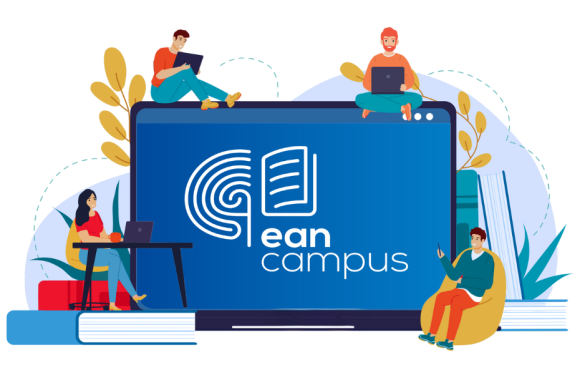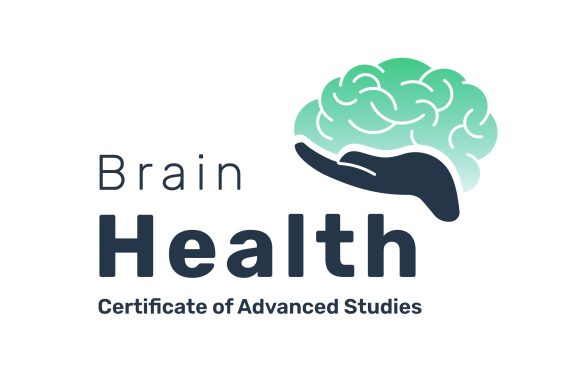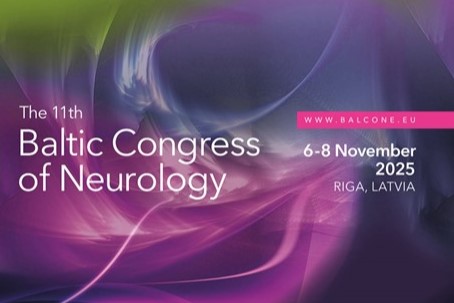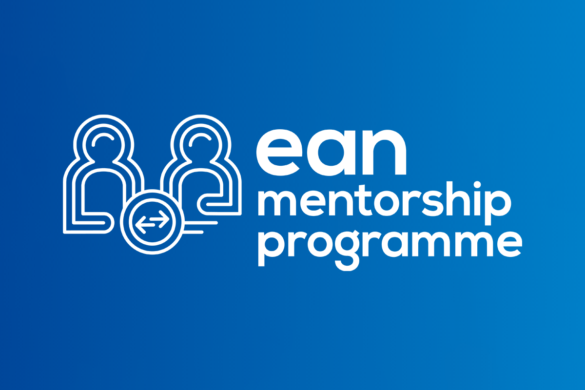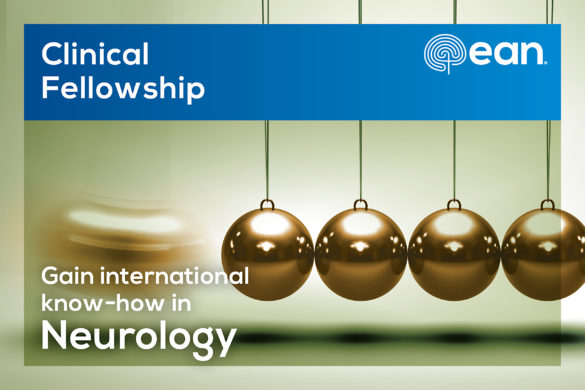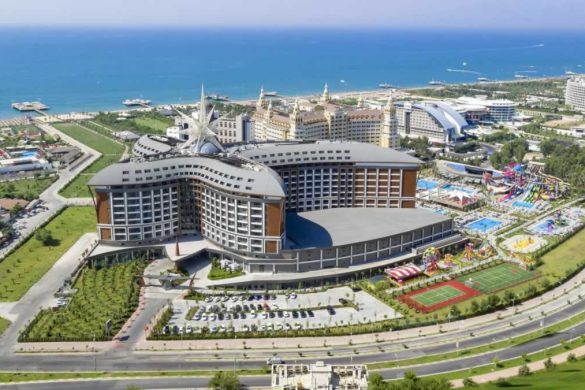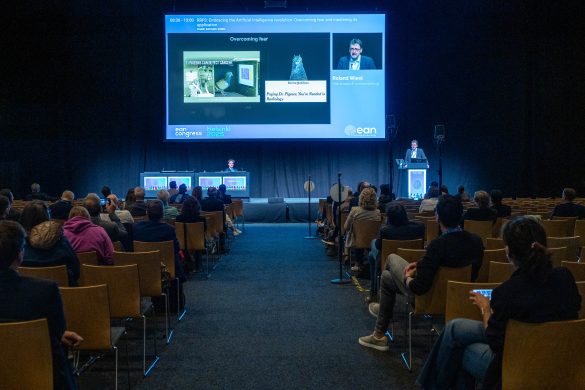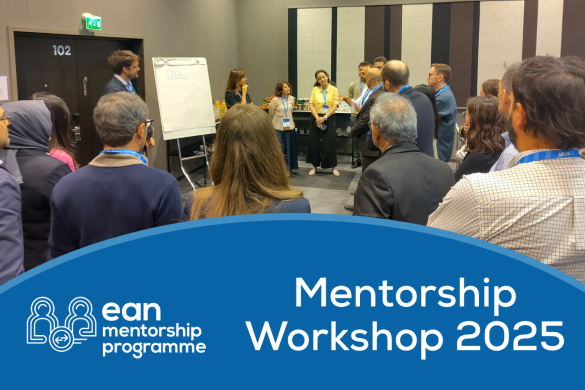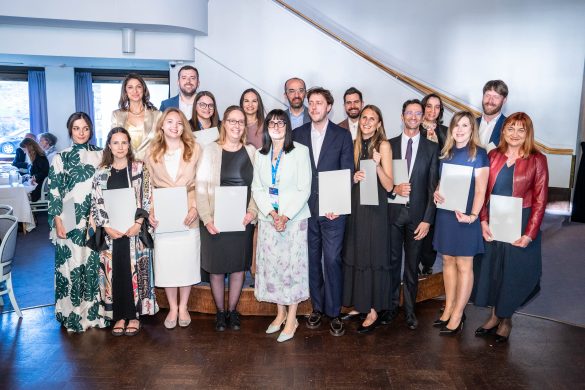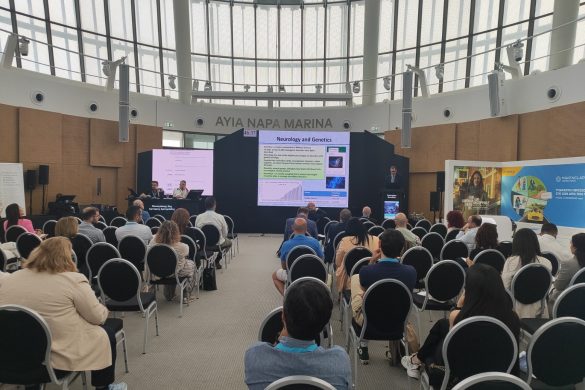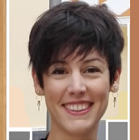
Marianna Bregianni, Athens, Greece
Term of Fellowship: 1 October – 17 December 2021
Hosting department: Department of Epileptology and Clinical Neurophysiology, Hopital de la Timone, Marseille, France
Supervisor: Prof. Fabrice Bartolomei
…
It was a great pleasure and honour for me to take part in an EAN Clinical Fellowship at the Department of Epileptology in La Timone Hospital, Marseille under the supervision of Professor Fabrice Bartolomei. It was a unique opportunity to participate in clinical and research fields of a cutting-edge epileptology department with great experience.
During my stay, I attended the Outpatient Clinic, where I had the opportunity to see patients with drug-resistant epilepsies who had undergone epilepsy surgery. These were complex cases, having undergone different types of surgeries like focal resection of epileptogenic lesion/network, temporal lobe and extratemporal resection, hemispherotomy, corpus callosotomy, stereotactic radiosurgery and patients with implanted neurostimulation devices, such as Vagus Nerve Stimulation (VNS) and Deep Brain Stimulation (DBS). I also had the chance to attend research protocols with transcranial direct current stimulations (TDCS).
I also participated in the video-EEG/SEEG Unit, which was incredibly educational, and I attended the EEG interpretation with experienced epileptologists. During my stay, I was also introduced to advanced techniques in epilepsy management, like magnetoencephalography (MEG). I was also included in the scientific, multidisciplinary, weekly meetings of the department, where complex cases were discussed, and decisions were made regarding presurgical evaluation and epilepsy management. Finally, it was very important for me that I had the chance to familiarise myself, to a great extent, with surface EEGs and videos of different types of seizures.
However, apart from the scientific aspect, what was incredibly important for me was the warm, easy-going and open way that I was welcomed and treated by every member of the department, even though I spoke almost no French in the beginning. Prof. Bartolomei was always accessible and willing to answer my questions and solve any administrative obstacles. I learned a lot about epilepsy diagnosis and management from his outpatient cases and I was really inspired by the way he approaches science. I am deeply grateful to him for assigning me the writing and publishing of an epilepsy case series. Also, for his valuable contribution to my attendance of a great French epilepsy congress, the 23èmes Journées Françaises de l’Épilepsie (JFE).
I would like to express my gratitude to every member of the Epileptology Department of La Timone Hospital for their assistance and support, and for making my fellowship interesting, useful and pleasant. The department is a referral centre with great experience and research achievements, which is also characterised by the warm and caring way in which patients and visitors are treated.
Last but not least, I would like to deeply thank the European Academy of Neurology for this invaluable support in my career and education, and the unique opportunity I was given in deepening my knowledge and extending my professional network.
Ana Sofia Grenho Rodrigues, Lisbon, Portugal
Term of the Fellowship: 4 October – 17 December 2021
Hosting department: Department of Neurology, St George’s Hospital, London, United Kingdom
Supervisor: Dr Anthony Pereira
I am delighted to report on my Clinical Fellowship experience at St George’s Hospital!
During my residency I developed a special interest in cerebrovascular diseases, so this opportunity provided me the chance to see how the daily activities of a stroke unit take place in a different country and setting.
My mentor during the fellowship was Dr Pereira. From the start he integrated me into the multiple activities of the department. My daily activities were divided between the Stroke Unit, emergency department and outpatient clinics.
In the Stroke Unit I participated in the assessment and discussion of hospitalised patients. Daily, the clinical activity started with the shift handover meeting, in which the consultants, the residents, the nursing team and the rehabilitation team were present. Subsequently, the radiology meeting was held, and all patients were presented, and the relevant imaging were reviewed. After these two meetings, the clinical visit was carried out at the bedside of each patient. During the visit, intercurrences were reported, the clinical history and/or neurological examination were reviewed, and complementary exams and monitoring data were discussed individually. In addition to clinical activity, this centre collaborates in multiple clinical trials in cerebrovascular diseases, having a research centre whose elements participate daily in ward and emergency activities.
Throughout the internship, I regularly followed the stroke team in the emergency department, mainly in the thrombolysis calls, in which I was able to assist the unit’s team in the approach of patients with acute stroke. During this period, I received training in all aspects of the hyperacute management of stroke patients, including decision making regarding thrombolytic and endovascular treatment for ischaemic stroke.
I followed a weekly consultation period for neurovascular diseases, as well as, when possible, daily consultations for TIA’s. Both neurovascular disease consultations and TIA consultations were initially conducted by intern neurology physicians, with each case being discussed with the specialist in charge. I accompanied the specialist in the discussion of each of the cases evaluated in consultation, having had the opportunity to learn about the long-term medical follow-up of the patients followed at this centre.
Every week I had the opportunity to attend stroke teachings by Dr Anthony Pereira. The format of the sessions was variable, including theoretical review sessions, but also imaging discussions.
Since I was in a tertiary hospital with representation of the various neurological subspecialties, I also participated in other activities of the service. Thus, I was able to attend the consultation of functional neurological diseases of Prof. Mark Edwards and I also had the opportunity to be involved in the activities of the General Neurology ward, for a week, with Prof. Francesca Morgante. This week was an important contribution to my training as it allowed me to encounter rare pathologies, namely Lafora bodies disease, as well as autoimmune encephalitis associated with anti-LGI1, anti-DPPX and anti-GAD antibodies.
This internship was a huge learning opportunity as it allowed me to get in touch with a large number of patients with cerebrovascular pathology, in addition to providing me with an experience in a different country, having had the opportunity to understand the differences in their functioning. I thank EAN and Dr Pereira for this opportunity!
Diogo Fernando Reis Carneiro, Coimbra, Portugal
Term of Fellowship: 1 October – 31 December 2021
Hosting department: Department of Neurology, Movement Disorders Group, Salpêtriere University Hospital, Paris, France
Supervisor: Prof. Marie Vidailhet
I was extremely pleased to receive the confirmation from Prof. Marie Vidailhet of my EAN Clinical Fellowship at the Neurology Department at the Salpêtrière Hospital in Paris. The possibility of clinical growth in a centre of excellence in European neurology and the contact with a diverse clinical and social reality were decisive factors for this choice of spending a few months of my residency there.
The Salpêtrière Hospital is situated in a block of buildings on the left bank of the Seine and is one of the largest university hospitals in Europe. The Neurology Department includes the Movement Disorders Unit, led by Prof. Marie Vidailhet, and the National Reference Centres for Dystonia and Rare Movement Disorders and Tourette’s Syndrome, which are also part of the Reference Network European Union (ERN). The functional structure of this unit articulates an outpatient clinic, carried out by a team of ten doctors, and hospitalisation coordinated by the head of the clinic and two senior specialists. All training took place in French, including medical meetings.
The outpatient clinic included between eight and ten patients per schedule, and, despite the appointments, it could sometimes last until late afternoon. It was the only way to achieve an excellent dissection of the semiology, with attention to the detail of a rotating neck or a trembling skirt. But it was not just that. Bureaucratic constraints were overcome with ease, allowing the patients to be correctly observed in various spheres, never neglecting psychological and social aspects. The schedule of all physicians comprised patients with Parkinson’s disease at multiple stages, including those undergoing treatment with Deep Brain Stimulation (DBS) and apomorphine. I have observed many patients with segmental or generalised dystonia, tremor, and functional disorders. I attended multidisciplinary consultations dedicated to Tourette’s syndrome and dystonia, which involved a psychiatrist, psychologist and social worker in addition to the neurologist, allowing the best guidance of patients. Many of the rare disease patients were paediatric.
Botulinum toxin injections were performed using electromyography and musculoskeletal ultrasound. I participated directly in the treatment, accompanying the clinician in evaluating the patient, administering the drug, or performing the ultrasound to localise the muscles of interest. I had the opportunity to do a one-day practical training in toxin administration with ultrasound support, identifying elements of cervical and limb anatomy, which significantly increased my experience in this area.
The hospitalisation functioned in a ward used only for patients with movement disorders. Between six and ten patients were hospitalised weekly for diagnostic reasoning or advanced therapies (DBS, apomorphine and levodopa intestinal gel). On Tuesday and Thursday mornings, patient visits were coordinated by senior doctors who guided students, interns and external fellows to observe the patient’s semiology, differential diagnostic and therapeutic management. I also accompanied the nursing team in carrying out tests of levodopa and apomorphine.
I participated in neurophysiological exams of patients with movement disorders in the Neurophysiology Service at the Hospital of St. Antoine. This department, coordinated by Prof. Emmanuelle Apartis and Prof. Yulia Worbe, perfectly articulates with the Movement Disorders Unit, comprising examination of patients sent from outpatient or inpatient care. The examination contained the entire review of the anamnesis, focusing on the history of involuntary movements, other medical conditions and usual medication and a comprehensive physical examination. Combining these elements made it possible to adapt the neurophysiology exam protocol to extract the most potentially relevant information. From a technical point of view, surface polymyography combined with accelerometry and EEG with jerk-locked back-averaging were available. These exams introduce a critical element of objectivity in evaluating patients with movement disorders, allowing to distinguish tremor and myoclonus reliably, assess mobile dystonia, or support the diagnosis of functional neurological disorder.
I participated in the monthly DBS meeting, in the multidisciplinary discussion of cases proposed for surgery, in occasional meetings to discuss Tourette’s syndrome with foreign guests and in the general session of the Neurology Department, on Thursdays. The weekly clinical meetings of the movement disorders were held on Tuesdays, reminiscence of the Leçons du Mardi carried out by Charcot, with thematic discussions or complex clinical cases. I occasionally presented topics of interest that emerged during the outpatient consultation.
The experience of neurology at the Salpêtrière is not limited to the consulting rooms. The Charcot Library, housed in a cutting-edge research centre, contains fragments of the history of neurology that, in addition to providing a delightful afternoon, are the premise for analysing the medical progress of the last 150 years and the steps that will follow.
To conclude, I would like to acknowledge Prof. Marie Vidailhet and her team for their full support during this experience. Also, I would like to note the privilege of the fellowship I obtained from EAN to carry out this internship. The encouragement of some European neurology associations is essential to continue to create a postgraduate training network at the highest level in Europe.
…




